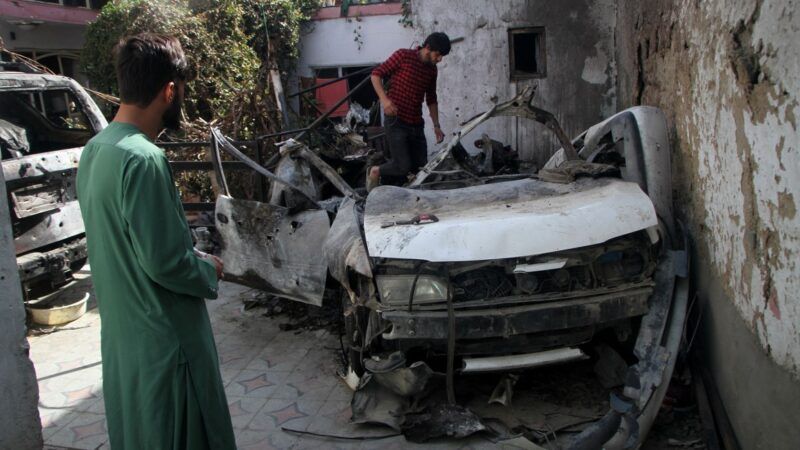Pentagon Admits to Accidentally Killing Civilians, Not Terrorists, in Kabul Drone Strike
Seven children were among the 10 killed.

The Pentagon today admitted what independent analysis has already concluded: A drone strike at the end of August that was meant to target Islamic State terrorists instead hit and killed 10 civilians, seven of whom were children.
On August 29, U.S. Central Command announced the military had used a drone to kill an ISIS terrorist who was plotting an attack on Kabul International Airport, just days after a previous bombing killed 13 U.S. troops and at least 170 Afghans.
But after the announcement, it appeared that the drone strike had instead killed an aid worker assisting a California-based nonprofit that helped feed refugees, along with several of his family members. At the time, military officials insisted that the hit was a "righteous strike" and that the vehicle was carrying explosives for a possible attack.
Further investigation showed that the car was probably carrying water, not bombs, and the aid worker, Zamari Ahmadi, was not, in fact, connected to the Islamic State.
Today the Pentagon acknowledged that the intelligence that led to the strike was wrong and that it had killed a group of civilians. From The New York Times:
"I offer my profound condolences to the family and friends of those who were killed," Gen. Kenneth F. McKenzie Jr., commander of United States Central Command, told reporters at a Pentagon news conference Friday. He said the U.S. was "exploring the possibility of ex gratia payments" to compensate the families of the victims.
The general said the strike was taken "in the profound belief" that ISIS was about to attack Kabul's airport, as the organization had done three days before, killing more than 140 people, including 13 American service members.
McKenzie even went so far as to credit the Times for some of its independent review of the attack. Reporters looked over surveillance footage and recreated Ahmadi's final workday, showing that his travels through Kabul all had reasonable explanations and that he was not organizing for an attack. The Times also suggested that at some point the officials surveilling potential terrorists might have mixed up Ahmadi's vehicle with a similar car that was used the next day to attempt a rocket attack on the airport.
Not only was this an indictment of the poor intelligence being used to plan for drone strikes, but it was also telling how loose those in charge were with allowing for a drone strike. There was never a point where the people who cleared the strike had any actual evidence that Ahmadi had explosives in his vehicle. The strike was justified on the basis of the suspicion of what he might have had.
Sen. Rand Paul (R–Ky.) rightfully grilled Secretary of State Antony Blinken on Tuesday that the Pentagon didn't actually know who it had struck and needed to investigate after the fact to figure it out.
"You'd think you'd kind of know before you off somebody with a predator drone, whether he's an aid worker or he's an ISIS-K operative," Paul said. You'd think so, but that the Pentagon didn't know goes a long way in explaining the hundreds of civilians who have ended up dead from these strikes.
Representatives from Amnesty International called for a full review and criminal responsibility for those involved, as well as an end to the use of drone strikes outside of areas of armed conflict.
"The U.S. must now commit to a full, transparent, and impartial investigation into this incident," said Amnesty International adviser Brian Castner in a prepared statement. "Anyone suspected of criminal responsibility should be prosecuted in a fair trial. Survivors and families of the victims should be kept informed of the progress of the investigation and be given full reparation."


Show Comments (132)